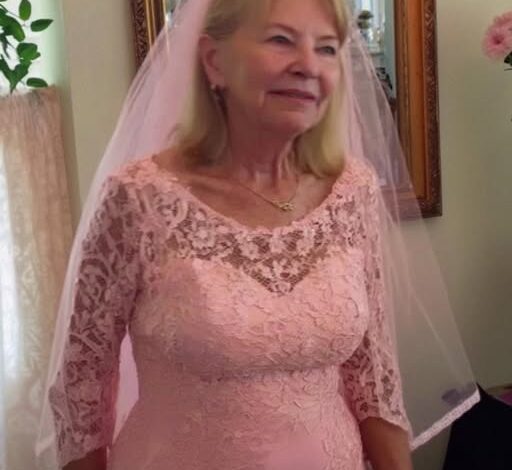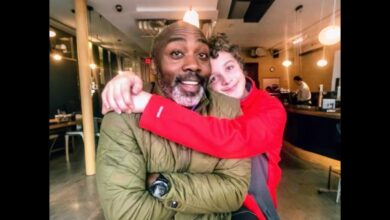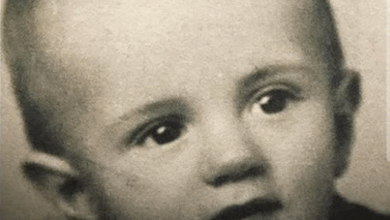
My DIL Laughed at the Pink Wedding Dress I Sewed for Myself – She Never Expected My Son to Step In
I’m Tina, and at sixty years old, I was finally doing something for myself. I’d sewn my own wedding dress — blush pink satin with lace I’d picked out like a dream I never thought I’d dare to touch. After decades of living for everyone else, this day was supposed to be mine. But instead of joy, I got laughter — cruel, mocking laughter — from the last person I expected. Until my son stood up and showed everyone what love and respect really look like.
Life didn’t turn out the way I imagined. My husband left when our son, Josh, was just three. He said he didn’t want to “compete with a toddler for attention.” That was his excuse before walking out, suitcase in hand, door slamming behind him. I remember standing there — Josh in one arm, a pile of unpaid bills in the other — and realizing no one was coming to save me.
So I didn’t cry. I went to work. Two jobs. Days as a receptionist, nights waiting tables. Sleep became optional. Joy was something other people had time for.
Back then, everything I wore came from donation bins or church drives. My escape, the one little spark I clung to, was sewing. I’d mend clothes for Josh, sometimes stitch something new from scraps. Over time, sewing became my quiet rebellion — a way to create beauty when life refused to give me any.
My ex hated color. “No pink, no white,” he’d bark. “You’re not some silly girl.” In his world, happiness had rules — and joy was something women had to earn. So I learned to blend in. Beige, gray, brown. The shades of survival.
Years passed. Josh grew up strong and kind — my proudest accomplishment. He got married, built his own life, and for the first time, I thought maybe I could exhale.
Then, one afternoon, I met Richard. It wasn’t fireworks or some movie moment — it was a runaway watermelon. I was in the grocery store parking lot, juggling bags, when one slipped. He caught it before it rolled away.
“Want me to rescue this melon before it escapes?” he said, smiling.
I laughed, the kind of laugh that feels strange when you haven’t used it in years. He had soft eyes and laugh lines that told stories. We talked right there between parked cars, and when I drove home, my cheeks actually hurt — from smiling.
We started meeting for coffee. Then dinners. Then long walks that stretched into evenings. Richard was a widower who still set two cups at the table out of habit. He didn’t care that I wore sneakers instead of heels or that my hands were rough from years of work. With him, I could just be Tina again.
Two months ago, he proposed — simple, quiet, over dinner. No grand gesture, no audience. Just him, asking if I’d share the rest of our lives. I said yes.
For once, I didn’t overthink. I decided I wanted our wedding to be ours — small, warm, honest. And I knew exactly what I wanted to wear: pink. Not pale beige masquerading as color, but real, unapologetic pink.
I found the fabric on clearance — blush satin with delicate lace embroidered in tiny flowers. It felt too joyful, almost scandalous, but I bought it anyway. Every night for three weeks, I sewed. Carefully. Slowly. I hummed old songs while my hands worked the needle. The dress wasn’t perfect, but neither was I. It was mine — and that made it enough.
The week before the wedding, Josh and his wife Emily came by. I showed them the dress, proud and a little nervous.
Emily took one look and burst out laughing.
“Oh my God, are you serious?” she said. “Pink? For a wedding? You look like a five-year-old playing dress-up.”
I tried to keep my tone light. “It’s blush, not hot pink. I just wanted something different.”
She smirked. “You’re sixty. You’re supposed to wear navy or beige. Not Barbie pink. It’s… sad.”
Josh stayed silent, staring at his coffee. I smiled through it, even as her words hit harder than I wanted to admit.
That night, I sat at my sewing table and stared at the dress. For a moment, I almost folded it away. Then I thought about all those years I wore gray because someone told me color was foolish. No. Not this time.
The morning of the wedding, I stood in front of the mirror. The satin shimmered softly. My hands traced the seams I’d stitched by hand, each one imperfect but strong — like me. For the first time in my life, I looked in the mirror and saw someone happy.
At the hall, people smiled and hugged me. Some complimented the dress. I started to believe it — until Emily walked in. She looked me up and down, smirked, and said loud enough for everyone to hear, “She looks like a cupcake at a birthday party. All that pink — how embarrassing.”
The laughter from a few nearby guests stung, and the shame hit fast — that old, familiar ache that told me to shrink, apologize, fade.
But before I could speak, Josh stood up.
He tapped his glass, voice calm but clear. “Can I have everyone’s attention?”
The chatter stopped. All eyes turned to him. Emily straightened, expecting a joke at my expense.
Instead, he looked straight at me.
“Do you see my mom in that pink dress?” he asked.
The room murmured.
“That dress,” he continued, “isn’t just fabric. It’s sacrifice. When my dad left, my mom worked two jobs so I could have school shoes and hot meals. She gave up everything — new clothes, sleep, her own dreams — so I could have mine. And now, she’s finally doing something for herself. Every stitch on that dress is a story. Every thread is strength. That pink dress isn’t silly. It’s freedom. It’s joy. It’s my mom saying she matters too.”
He raised his glass. “To my mom — to courage, to color, and to pink.”
The room erupted in applause. I blinked fast, but the tears still came. Emily’s face turned crimson. “I was just joking,” she muttered. No one laughed with her.
The rest of the night felt like a celebration of everything I’d forgotten how to feel. People came up to touch the fabric, to tell me how beautiful it was. One woman whispered, “You look radiant. Like you’re glowing from the inside out.”
Richard held my hand all night. “You,” he said softly, “are the most beautiful bride I’ve ever seen.”
For once, I believed it.
The next morning, Emily texted: You embarrassed me. Don’t expect me to apologize.
I smiled, put the phone down, and made myself coffee. I didn’t answer. Because she was wrong — she’d embarrassed herself.
For sixty years, I believed joy had an age limit. That color, softness, or wanting to be seen were things I had to earn. But not anymore. I’m done fading into beige.
Pink looks too damn good on me. And if that makes someone uncomfortable — maybe they just forgot what happiness looks like.
So tell me — what color are you afraid to wear? And why?




